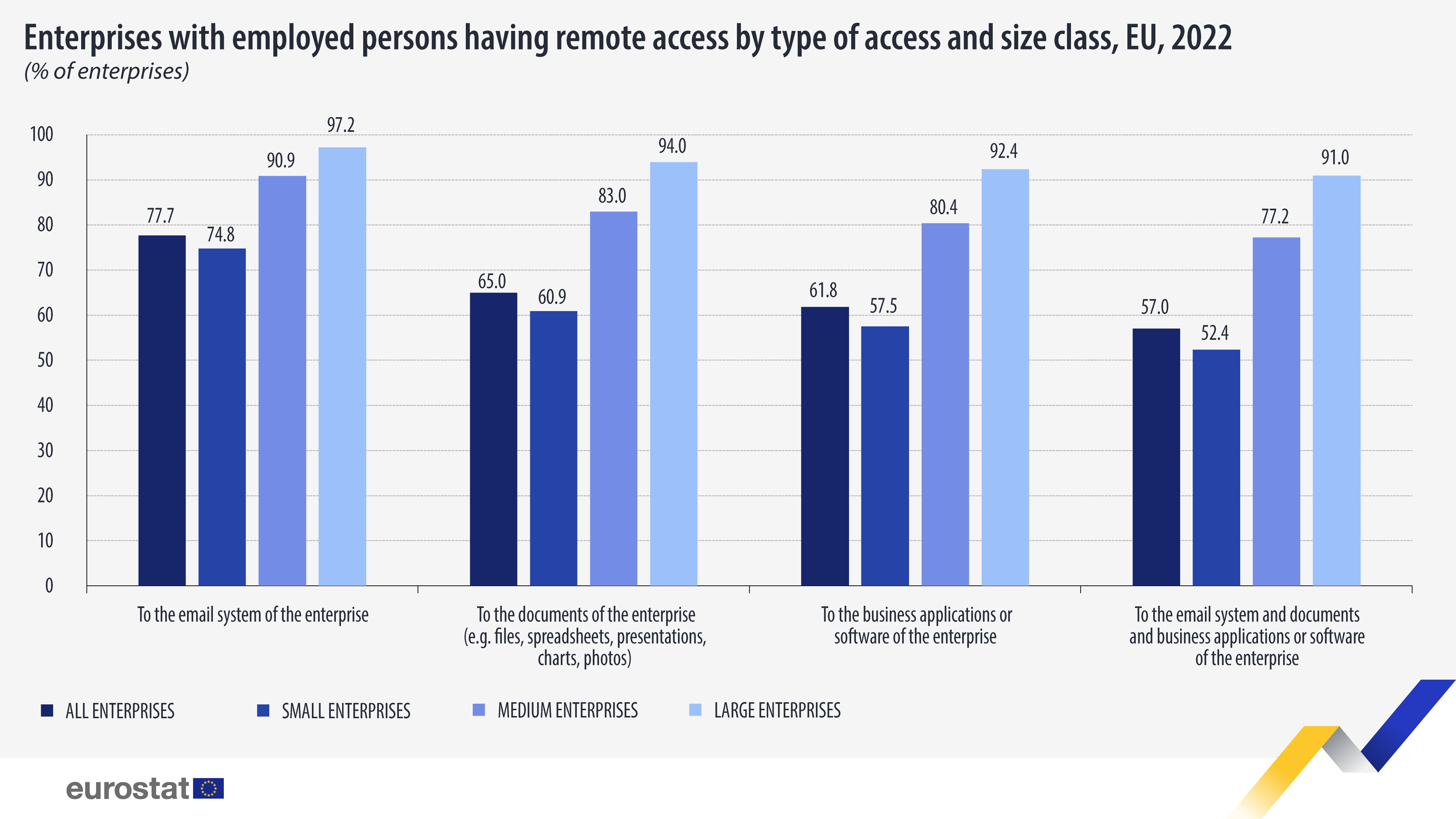50% of EU enterprises used remote meetings in 2022

The COVID-19 pandemic changed work models and led many enterprises to turn to virtual meetings to bridge the physical distance and maintain their businesses.
In 2022, in the EU, 50% of enterprises with 10 or more employees or self-employed persons conducted remote meetings via the internet. Among the EU members, there was a large variation in the percentage of enterprises that used this feature. The largest shares were registered in Sweden (79.4%) and Finland (78.5%), followed by Denmark (78.0%), Malta (68.3%) and Ireland (63.6%).
At the opposite side of the scale, the lowest shares were recorded in Bulgaria (28.2%), Hungary (29.4%), Romania (31.2%), Greece (32.9%) and Slovakia (35.2%).
Source dataset: isoc_ci_mvis
Mostly large enterprises offered access to remote working
Statistical data on remote access aims to measure the technological readiness of enterprises to make it possible for their employees to work remotely by giving them remote access to three types of enterprise resources: to the email system, to documents and to business applications or software of the enterprise.
In 2022, in the EU, almost 6 out of 10 enterprises (57.0%) with 10 or more employees or self-employed persons offered all three types of remote access to their employees.
When it comes to the size of the enterprises, 91.0% of large enterprises (250 or more employees or self-employed persons) offered all three types of remote access to their employees, while the same happened in 77.2% of medium enterprises (from 50 to 249 employees or self-employed persons) and 52.4% of small enterprises (from 10 to 49 employees or self-employed persons).
Source dataset: isoc_ci_ras
Large enterprises led in all types of remote access. Almost all large enterprises offered remote access to the email system of the enterprise (97.2%), to documents of the enterprise (e.g. files, spreadsheets, presentations, charts, photos) (94.0%) and to business applications or software of the enterprise (e.g. access to accounting, sales, orders, Customer Relationship Management (CRM)systems) (92.4%).
As for medium enterprises, 90.9% gave their employees remote access to the email system, 83.0% to the documents of the enterprise and 80.4% to the business applications or software of the enterprise.
Comparatively, small enterprises provided remote access to a lesser extent, since 74.8% of them gave their employees remote access to email, 60.9% to documents and 57.5% to business applications or software of the company.
For more information
- Statistics Explained article on online meetings and remote access to enterprise resources
- Thematic section on digital economy and society
- Database on digital economy and society
Methodological notes
- France: break in the time series due to the implementation of the statistical unit enterprise.
- Data come from the 2022 Community survey on ICT usage and e-commerce in enterprises and refer to all enterprises with at least 10 employees or self-employed persons (in NACE Rev. 2 sections C to J, L to N and group 95.1). Further methodological information related to the survey can be found here.
If you have any queries, please visit our contact us page.


